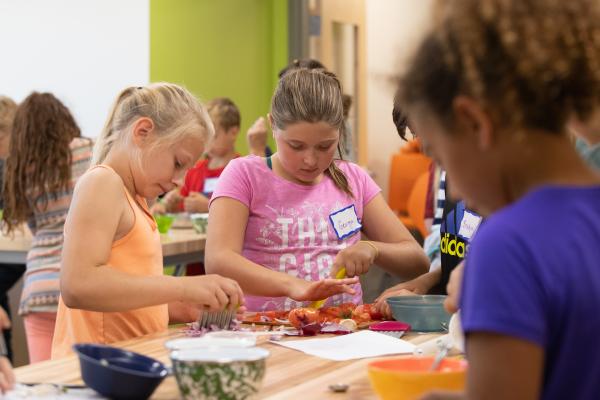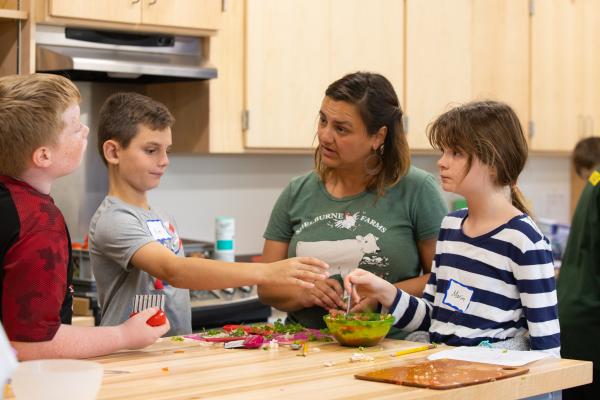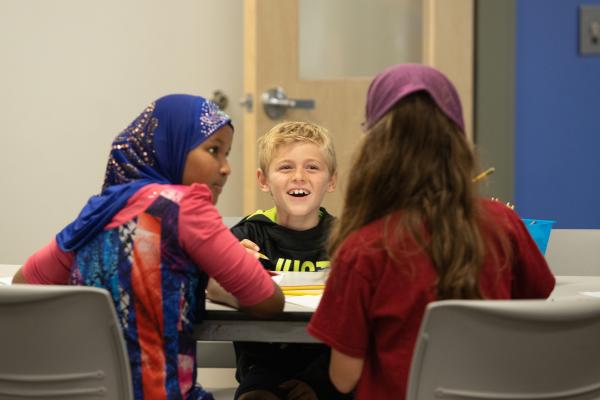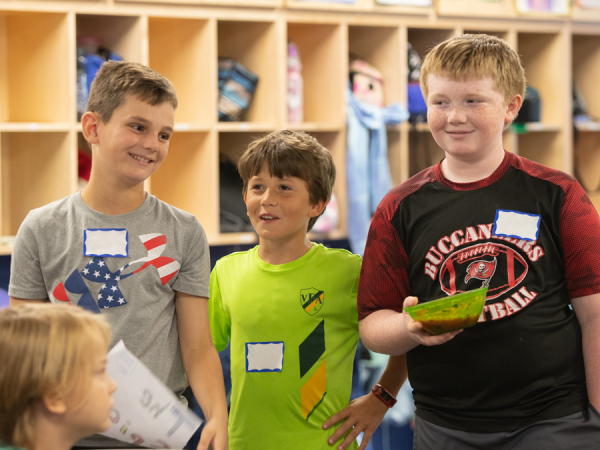Cooking to Grow Confidence, Knowledge, and Teamwork
Every September, within the first few weeks of school, we welcome Shelburne Community School fifth student classes to the Farm to host team-building activities. But not this year. This year, the Farm went to the school.
Farm Educators brought pounds upon pounds of tomatoes, tomatillos, onions, peppers, garlic, herbs, beans, and other produce from the Market Garden to the school’s Maker Space. Student teams were tasked with a spicy culinary challenge: use any of the produce to create their own salsa, document the recipe, and create a product name, slogan, and logo in 90 minutes.
While this sounds like a simple cooking activity, our educators are experts in using the food we all eat as a tool for exploring so much more than taste buds.
A Try-New-Things Attitude
Student quote of the day: “I’m growing my salsa confidence! I’ve never liked salsa, but I know that I like anything that I make.”
Confidence building and the willingness to try new things often go hand-in-hand, and food-related activities are ways of practicing both. “Safe risk-taking opportunities, like making a recipe and taste-testing it, offer up a chance for kids to make their own choices and then experience the consequences,” explains School Programs Coordinator Courtney Mulcahy. “If a kid throws together an unusual salsa, and doesn’t like it, no big deal. But practicing the act of testing new ideas and being open to the unknown is a skill they’ll use throughout life and will help to build their resiliency for times when consequences are complicated and difficult.”
And since kids are generally already interested in food, they’re often eager to take on a bigger role in the kitchen.“Kids are always so on task and so engaged when they’re cooking. Just give them their task and get out of the way!” relates Courtney. “By including kids in the family’s food decisions, you’re teaching them so much more than you even realize.”
Not every student has diced up tomatoes, peppers, onions, or herbs to make their own salsa, so cooking activities can be truly eye-opening. Students have the opportunity to get close to their food: nibbling on individual peppers to taste for spicy-ness and finding out that chopping onions can cause lots of tears. These hands-on experiences can then lead to big questions: Who plants and harvests the vegetables we eat? What are their lives like? How are the vegetables transported? How much does a jar of salsa cost the company? How much would it cost to make our own salsa instead buying it in a store? What's the trade-off?
“What Role Do I Play?”
Working in a group can be challenging… in fifth grade and well into adulthood. In the classroom, it can be helpful to allow students the time to reflect on what roles they take on when in a group. Each team had a general structure with some divisions—some people could cook, and others needed to be working on the brand components—but ultimately, they were making decisions as a group. Team building doesn’t always look like ropes courses and trust falls, it can be learning how to say your ideas out loud in front of new people, practicing being a leader but also listening, and deciding when there are “too many cooks in the kitchen.” This activity, and food in general, has proven to be a great way for kids to figure out how to work with others: they’re engaged and need to divy up smaller tasks that all impact one final product.
Do you have a favorite salsa recipe to make with kids? Or a favorite salsa ingredient? Share them with us in the comments!




